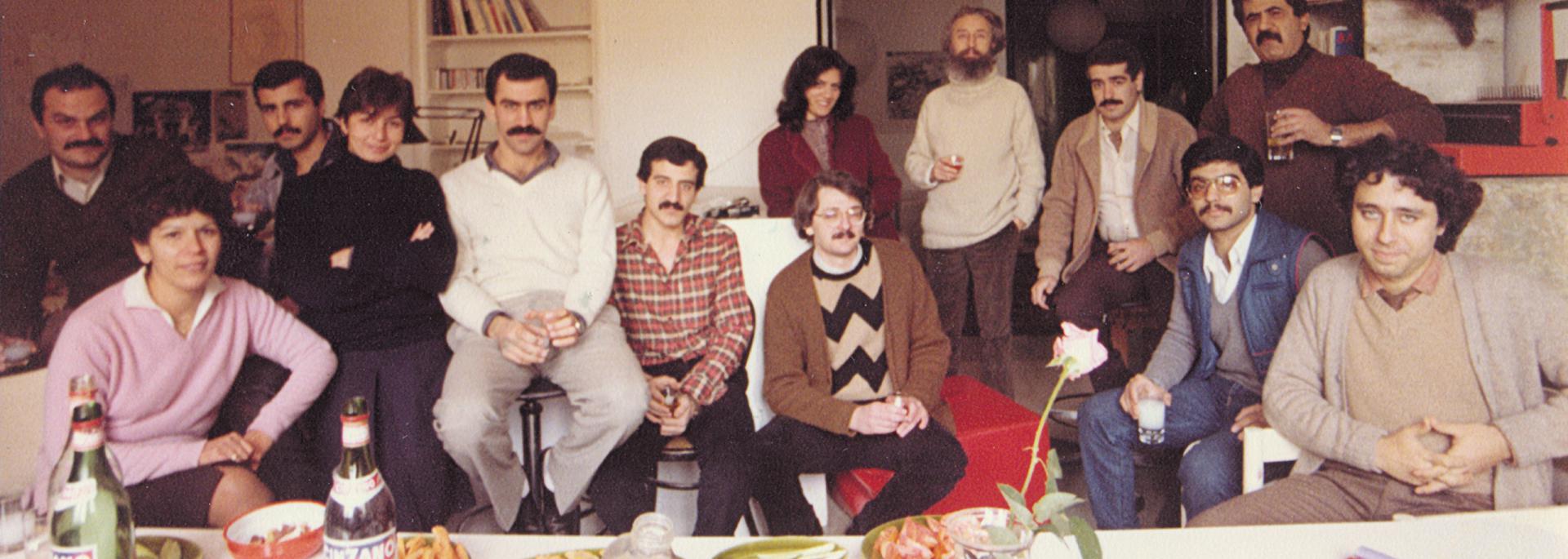
1980 - 1990
1980 - 1990
In its early years, the Atelier settled down in Ashrafieh, on Abdel Wahab El-Inglizi Street, in a refurbished ground-floor apartment that had suffered dramatically the 1978 bombing damages.
The building had seen its occupants flee and the street was left almost uninhabited; though somehow buzzing in the morning, it emptied at 2 PM every day.
It was a time of emigration and displacement for the populations of the South and of Beirut, fleeing to quieter neighborhoods in the northern areas of the city.
It is these areas that staged the most pressing need for shelter and housing, hence spawning the - often anarchic - emergence of new buildings.
As the children of these families needed to be schooled within these areas, AAA was – and still is - devoted to responding to this necessity with the construction of schools and colleges.
Nevertheless, as the study and construction works went by, the agenda kept evolving given the mounting needs.
For this purpose, the plans, although elaborated prior to the war and thus before the beginning of the construction soon became obsolete.
Amphitheaters, canteens, sport facilities and other such spaces, logically considered superfluous in those days, were shortly substituted with classrooms.
For the architects we are, such circumstances brought forward the eternal challenge of responding duly to the changing needs while simultaneously maintaining a sense of architectural coherence and quality in the sites.
Moreover, the Atelier worked on the construction of private and collective housing.
Given the particularly volatile economic and security climate of the time, some projects were built whilst others were abandoned in the process.
In the meantime, the Atelier won several architecture competitions in which it had been invited to participate part.
All endeavors were carried out in toggle between changing contexts, irregularly shifting from periods of acute violence to ephemeral moments of lull.
During the second half of the decade, works took place at a different location, in a re-arranged shed made available by the Saint-Coeurs Sisters’s Congregation for whom the Atelier had several projects underway.
The shed was located on the site on which the “Jardins de Tabaris” complex was later erected.
As we are evoking this era, let us seize the opportunity to assert the quality relationship held between AAA and the Congregation throughout their collaborations.
A constructive dialogue has allowed the Atelier to deliver, throughout war and until now, the establishment and development of educational institutions of significant architectural and pedagogical quality, thereby contributing to the cultural edification of generations of pupils. In this regard, AAA remains grateful to the Congregation, as well as to Emile Nasr who put together the study group and led the operations.
The 1980's reached an end with an ultimate eruption of extremely severe violence, in which AAA's offices were entirely ransacked, the equipment destroyed and the staff scattered.
This marks the end of AAA's first decade.
